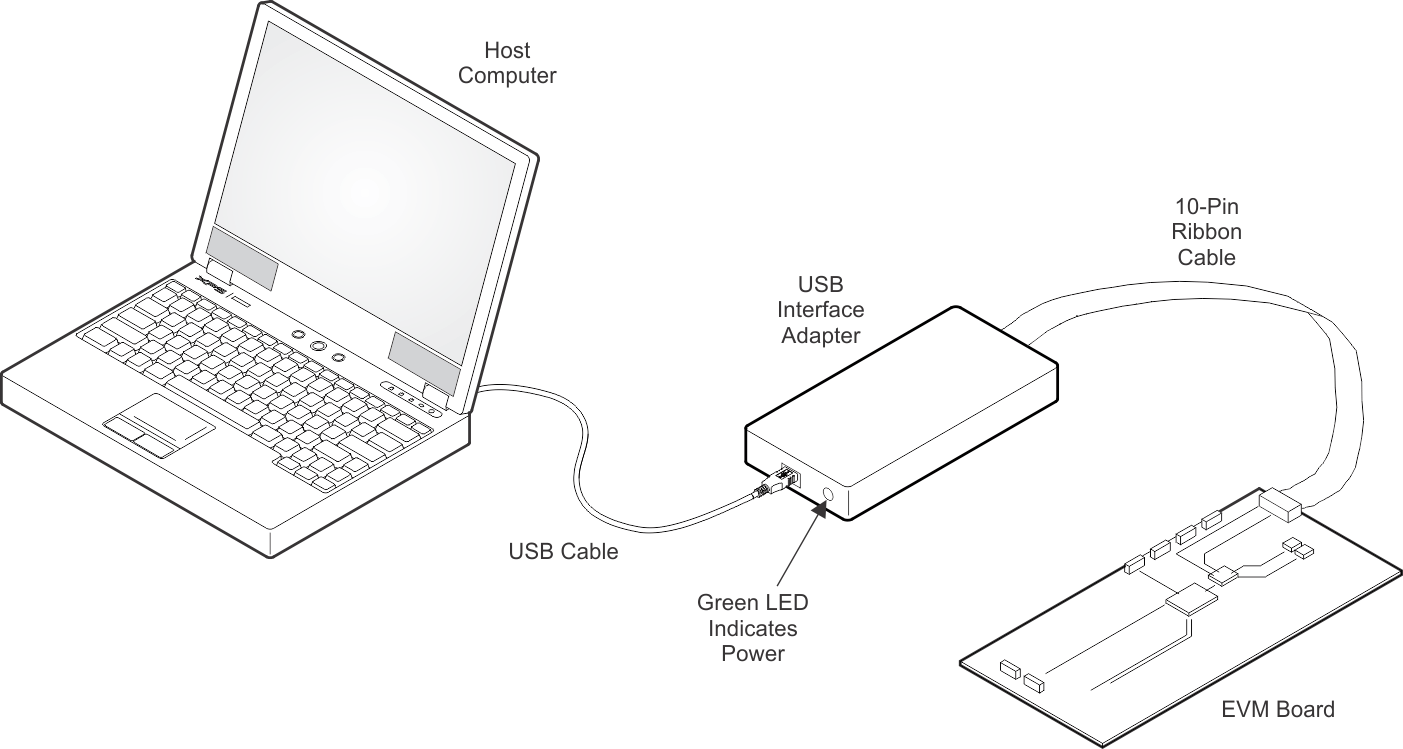SLVUD04 August 2024 TPSM83102
- 1
- Description
- Features
- 4
- 1Evaluation Module Overview
- 2Hardware
- 3Software
- 4Hardware Design Files
- 5Additional Information
3.2 Interface Hardware Setup
Connect the USB2ANY adapter to your PC using the supplied USB cable. Connect the EVM connector J3 to the USB2ANY adapter using the supplied 10-pin ribbon cable. The connectors on the ribbon cable are keyed to prevent incorrect installation.
A quick adapter connection overview is shown in Figure 3-1.
 Figure 3-1 Quick Connection Overview
Figure 3-1 Quick Connection Overview